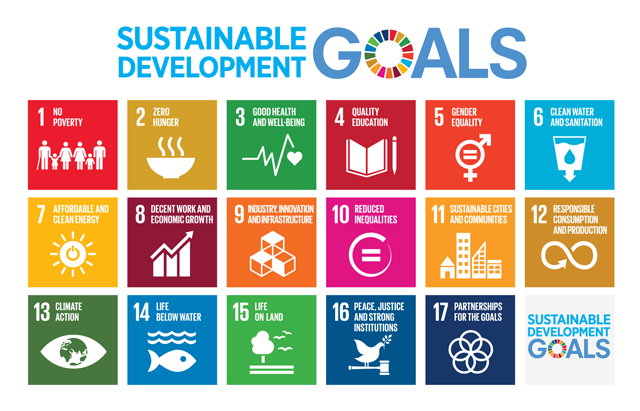Although the world faces considerable challenges ahead, not least in terms of reducing extreme poverty and hunger and the adverse impacts caused by climate disruption, we cannot underestimate the numerous developmental successes that the world has witnessed in recent decades. Indeed, as Steven Pinker has recently argued, in relation to health, prosperity, safety, peace, and happiness, humanity is much better off today than ever before in history. And although such achievements have not been equally replicated in all arenas (e.g. the environment), this should deter us from asking what “success” means in practice, and how such ideas can be mobilized to apply to the 2030 Agenda and the SDGs.
Since 2015, there has been growing scholarship on the feasibility of achieving the SDGs and the actual impact of the 2030 Agenda on global development. A first set of issues that has attracted research interest relates to the 2030 Agenda’s underlying theory of change and the benefit and pitfalls of formulating goals and targets, and the resulting trade-offs. Some question the viability of current approaches to economic growth, the influence of neoliberalism and the inability to identify specific duty-bearers who can be held to account for inaction and failure to achieve the goals. Others focus on measurable indicators and the methodology of tracking progress, including effective monitoring systems and accountability mechanisms and the most logical sequence of implementation.
Unsurprisingly, a growing amount of scholarly interest focuses on the national and local implementation of the SDGs and the challenge of achieving the three key SDG principles – universality, integration, leave no one behind. For example, while the mainstream SDG rhetoric insists that “no goal should be met unless it is met for everyone”, what this means in practice remains unclear. Some argue that the pressure of goals and targets can encourage governments to ignore the neediest. Still others point to unreliable and poor-quality data in large parts of the developing world and question the capacity of countries to reach “the furthest behind first” without knowing who they are. The emerging consensus has, however, highlighted the importance of pursuing an integrated approach to economic, social and environmental aspects of development, requiring interdisciplinary research in addition to intersectoral collaboration and knowledge sharing.
For the past couple of years, over 11000 students from over 150 countries have taken the free Massive Open Online Course (MOOC), “What Works? Promising Practices in International Development”, where my colleagues and I highlight stories, cases, and events that can be considered “promising” or perhaps even “successful” in improving the well-being of the poor and contributing to overall societal progress. The goal has been to learn how to better understand what works—and to unpack how and why it works—as we consider global and national development programs and anti-poverty interventions. Among the most popular themes in class discussions have been those related to understanding what constitutes “success” in development projects and programs. Some of these perspectives appear particularly relevant to the 2030 Agenda and the SDGs.
When considering international development, there are a variety of ways to conceptualize success—and it is difficult, if not impossible, to reach agreement on a single way in which all development interventions can be assessed as being ‘successful’. Nonetheless, we can begin by posing a set of interrelated questions when trying to understand “What works” in development.
Such questions might include the following: What is the problem we have identified? Was it solved? What is the desired goal for the intervention? Was it achieved? If we focus on solving problems and achieving goals, then we have to tackle a further set of questions: identifying the most urgent types of problems that exist; durable solutions to these problems; the realistic goals that can be set; and the methods we must apply to measure the achievements of the project.
In understanding the impact of a specific project, some scholars highlight the importance of so-called triple constraints: time, budget, and scope. In other words: How long does it take to achieve an outcome? How much does it cost to achieve that outcome? How many people benefit from it? Related to the question of numerical impact is the question of which groups actually benefit from a project. For example, did the program or project target and benefit individuals and groups living in poverty?
Another question we must ask is whether the project resulted in positive changes in society that can be sustained over a considerable period of time. This is also related to the issue of capacity building, and we must ask whether a program has equipped the community with skills to help themselves in the future, making them less dependent on outside intervention. A crucial factor in this context is an understanding of the actual pace of change rather than simply focusing on meeting project goals.
We might also consider a program as “successful” if we can replicate it in other places. But sometimes it is valuable to highlight and better understand what worked in one area, irrespective of whether this is replicable elsewhere. At the same time, we must be aware that success stories run the risk of being overstated as part of a strategy aimed at showcasing a project or an intervention in a positive light, irrespective of actual impact.
Many of the participants in the What Works MOOC have been interested in understanding and interpreting success. And some have proposed a distinction between strict (narrow) and loose (broad) interpretations. Indeed, some claim that we often have a tendency of aiming too high, i.e. our expectations are sometimes unrealistic and contribute to a feeling of under-achievement. Another set of issues relates to the distinction between short-term and long-term impacts and direct and indirect results and impacts. What we measure, and the timespan we are concerned with, thus impacts the conclusion of whether a project has been successful.
Most participants in the MOOC highlight the importance of community buy-in. This includes the extent to which a community identifies a problem and then participates in developing adequate responses either on their own and/or with the help of interested individuals, groups and organizations. It is particularly important to ensure active participation of the community during the various phases of the project. While we must learn from past mistakes, we must also re-think current practices related to monitoring of projects and their evaluation. Some argue that it is important to make such exercises less bureaucratic and time-consuming. A common theme that has emerged in my interactions with students and practitioners all over the world relates to viewing success as facilitating change that a) helps as many of the target population as possible b) as cost-effectively as possible and c) ensures progress for as long as possible.
Although UN agencies and others have focused considerable attention to measurement and reporting on SDG progress at national levels, recent evidence, however, indicates slow implementation, and the need for greater efforts across the goals without losing focus on poverty reduction. Several studies also find that many outside the UN system are not familiar with the SDGs, even though the goals represent everyday problems. Understanding what works in relation to the SDGs is intrinsically related to measurable as well as non-measurable impacts. Indeed, the world must embrace the complexity of agreeing on “success” in achieving the SDGs. This requires all parties involved to be transparent on indicators for successful policy making and implementation, and how such criteria can be best understood and possibly measured from a project’s inception, which in turn will facilitate the creation of a space for shared learning and best practice.
Previous versions of this article have previously appeared in Global Policy and Bistandsaktuelt.


.jpg?alt=listing)



Log in to comment
Not UiO or Feide account?
Create a WebID account to comment